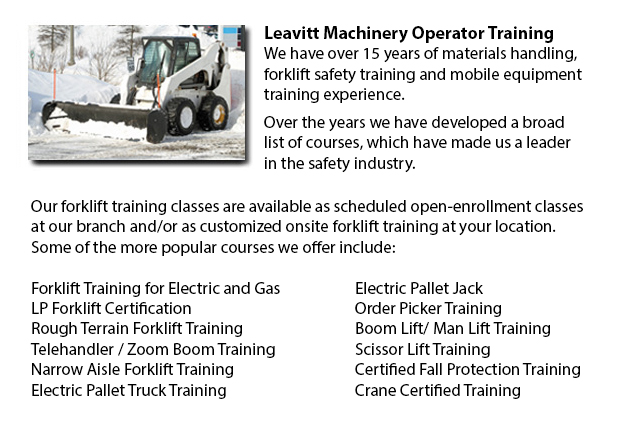
Markham Skid Steer Ticket - The lift arms on the skid-steer loader are situated beside the driver with pivots at the back of the driver's shoulders. These features makes the skid-steer loader different as opposed to the conventional front loader. Due to the operator's proximity to moving booms, early skid loaders were not as safe as conventional front loaders, specially during the operator's entry and exit. Today's' modern skid-steer loaders have various features to protect the driver like fully-enclosed cabs. Like various front loaders, the skid-steer model could push materials from one site to another, is capable of loading material into a truck or trailer and can carry material in its bucket.
Operation
There are several times where the skid-steer loader can be utilized in place of a large excavator on the jobsite for digging holes from the inside. To start, the loader digs a ramp to be utilized to excavate the material out of the hole. As the excavation deepens, the machine reshapes the ramp making it longer and steeper. This is a particularly functional method for digging under a structure where there is not enough overhead clearance for the boom of a large excavator. Like for example, this is a common scenario when digging a basement below an existing building or house.
The skid-steer loader accessories add much flexibility to the machinery. Like for example, traditional buckets on the loaders could be replaced attachments powered by their hydraulics comprising snow blades, cement mixers, pallet forks, backhoes, tree spades, sweepers and mowers. Various other popular specialized buckets and attachments comprise tillers, stump grinders rippers, wheel saws, snow blades, trenchers, angle booms, dumping hoppers, wood chipper machines and grapples.
History
In the year 1957, the first 3-wheeled, front-end loader was invented in Rothsay, Minnesota by brothers Cyril and Louis Keller. The brothers invented the loader in order to help a farmer mechanize the method of cleaning turkey manure from his barn. This equipment was compact and light and included a rear caster wheel that allowed it to maneuver and turn around within its own length, enabling it to carry out similar jobs as a conventional front-end loader.
The Melroe brothers of Melroe Manufacturing Company in Gwinner, N.D. acquired during the year 1958, the rights to the Keller loader. The company then employed the Keller brothers to help with development of the loader. The M-200 Melroe was actually the result of this particular partnership. This particular model was a self-propelled loader that was launched to the market during the year 1958. The M-200 Melroe featured a a 750 lb capacity, two independent front drive wheels, a rear caster wheel and a 12,9 HP engine. By the year 1960, they replaced the caster wheel along with a rear axle and introduced the first 4 wheel skid steer loader which was known as the M-400.
The term "Bobcat" is used as a generic term for skid-steer loaders. The M-400 soon after became the Melroe Bobcat. The M-440 version has rated operating capacity of 1100 lbs powered by a 15.5 HP engine. The business continued the skid-steer development into the middle part of the 1960s and introduced the M600 loader.
-
Markham Forklift Certification Schools
Markham Forklift Certification Schools - Forklift Certification is mandatory in North America. Hence, forklift training programs are essential both for businesses and for people seeking jobs in industries as forklift operators. Forklift training focu... More -
Telehandler Training in Markham
Telescopic handlers normally called telehandlers for short, are a very popular piece of heavy construction equipment. They are commonly utilized in the construction and agricultural trades. These machines have maximum reaching capability and can get... More -
Markham Zoom Boom Training
Markham Zoom Boom Training - Zoom Boom Training is designed to train operators on variable reach forklifts. The objectives of the training are to impart an understanding of the physics of the machinery, and to outline the operator's tasks. This progr... More -
Markham Heavy Equipment Ticket
Markham Heavy Equipment Ticket - A heavy equipment operator will utilize different construction machinery, depending upon the nature of the task at hand. The large equipment are constructed to carry out specific tasks in the most efficient method for... More -
Markham Scissor Lift Training
Markham Scissor Lift Training - When operating a scissor lift, they must be utilized competently so as to protect the safety of the other employees inside the workplace and to protect the safety of the machine. Competent operators are trained to driv... More -
Markham Manlift Operator Training
Markham Manlift Operator Training - The aerial lift or manlift is a specialized kind of hydraulic platform which is designed to raise a person vertically giving it an alternate name of a vertical personnel lift. These machines are widely used for a m... More -
Markham Heavy Equipment Training
Markham Heavy Equipment Training - The two most common kinds of heavy equipment training are classed into the categories of machinery; equipment that is fashioned with tracks and those with rubber tires. The tracked vehicle are heavy duty equipment s... More -
Markham Forklift Safety Training
Markham Forklift Safety Training - Those wanting work in industries that utilize forklifts should undergo a forklift safety training course before becoming a certified operator of a forklift. There are various ways to go about getting forklift safety... More

Forklift Certification Markham
TOLL FREE: 1-888-254-6157
Markham, Ontario
forkliftcertificationmarkham.com
Email Us
About Us


